The landscape of artificial intelligence has witnessed a remarkable evolution with the emergence of autonomous AI agents. These sophisticated systems represent a significant leap beyond traditional chatbots, capable of understanding complex instructions, planning multi-step processes, and executing tasks with minimal human intervention. Among the most prominent contenders in this space are AutoGPT and BabyAGI, two frameworks that have captured the attention of developers, businesses, and AI enthusiasts alike.
As organizations increasingly seek to leverage AI for automation and decision-making, understanding the capabilities, limitations, and ideal use cases for these autonomous agents becomes crucial. This comprehensive comparison explores how AutoGPT and BabyAGI approach task execution, learning mechanisms, and real-world applications, providing you with the insights needed to determine which framework might best serve your specific requirements in 2024 and beyond.
What is AutoGPT?
AutoGPT represents one of the first breakthrough implementations of autonomous AI agents built on large language models. Developed as an open-source project, it leverages OpenAI’s GPT-4 or GPT-3.5 to create agents capable of understanding complex goals, breaking them down into manageable sub-tasks, and executing them with minimal human oversight.
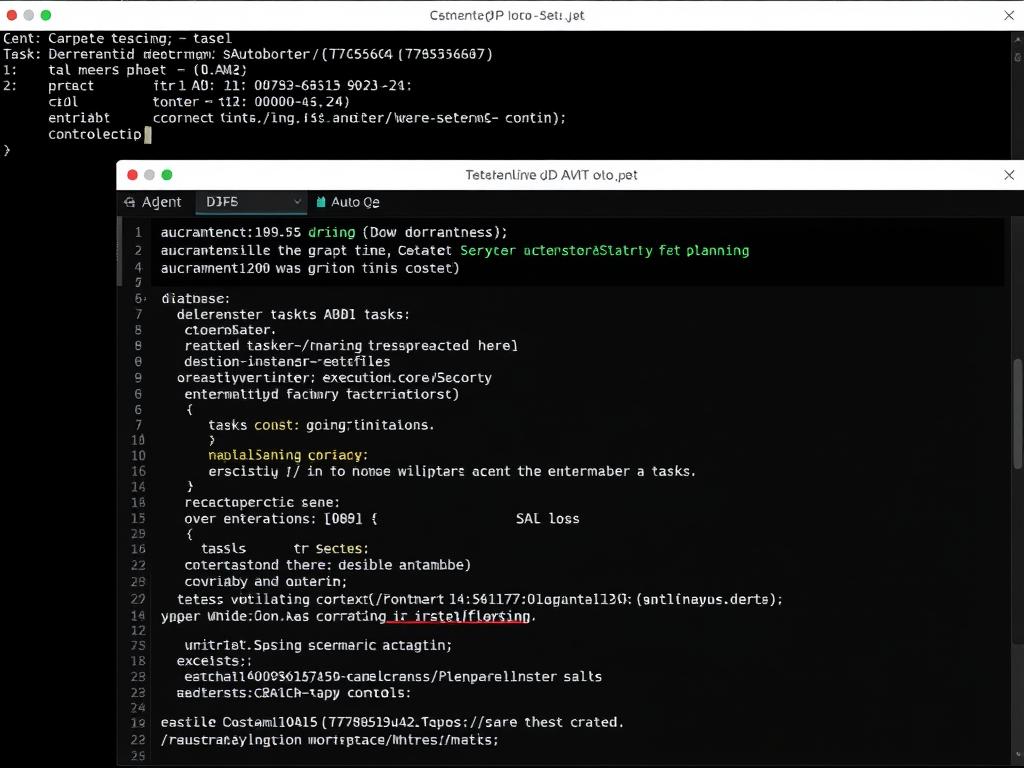
Key Features of AutoGPT
- Autonomous task decomposition and execution
- Memory management for context retention across multiple steps
- Internet access for real-time information gathering
- File operations for reading and writing data
- Self-prompting mechanism for iterative problem-solving
- Plugin architecture for extending functionality
Technical Architecture
AutoGPT employs a recursive self-improvement approach where it continuously refines its understanding and approach to a given task. The system maintains both short-term and long-term memory components, allowing it to reference previous actions and their outcomes. This architecture enables AutoGPT to handle complex, multi-step tasks that would typically require human intervention.
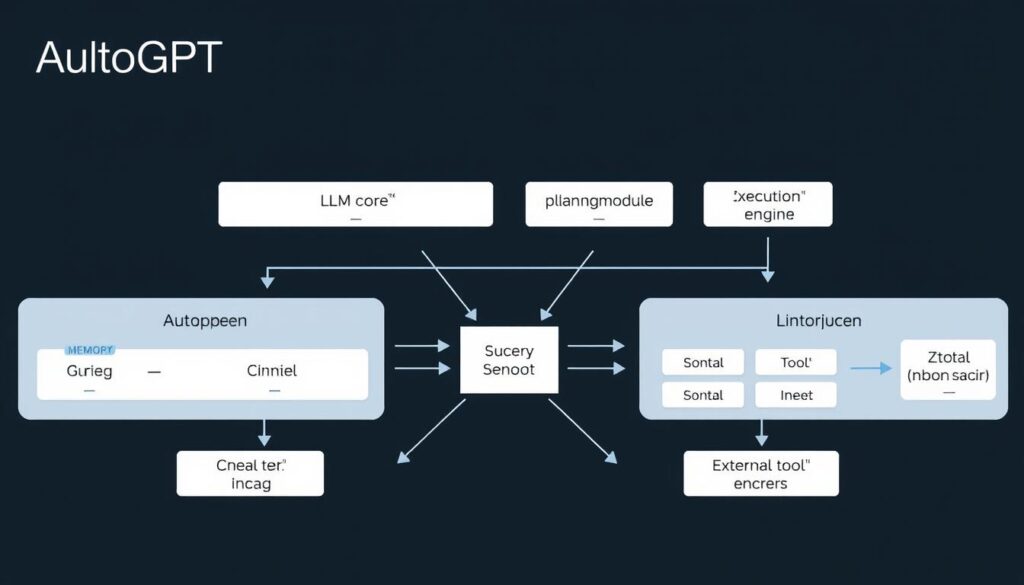
Common Use Cases
AutoGPT has demonstrated remarkable versatility across various domains:
Software Development
AutoGPT can write code, debug issues, and even develop simple applications based on specifications. Its ability to maintain context across multiple files makes it particularly useful for programming tasks.
Content Creation
From blog posts to marketing materials, AutoGPT can generate comprehensive content by researching topics, organizing information, and producing polished output with minimal guidance.
Data Analysis
By processing datasets, identifying patterns, and generating insights, AutoGPT can serve as an autonomous data analyst, producing reports and visualizations based on raw information.
Research Assistant
AutoGPT excels at gathering information from multiple sources, synthesizing findings, and presenting comprehensive research on virtually any topic accessible online.
Explore AutoGPT’s Capabilities
Discover how AutoGPT can automate complex tasks and streamline your workflows with its advanced AI capabilities.
What is BabyAGI?
BabyAGI, developed by Yohei Nakajima, takes a different approach to autonomous AI agents. Inspired by the concept of task-driven artificial general intelligence, BabyAGI focuses on creating a system that can manage, prioritize, and execute tasks while continuously learning and adapting its approach based on outcomes.
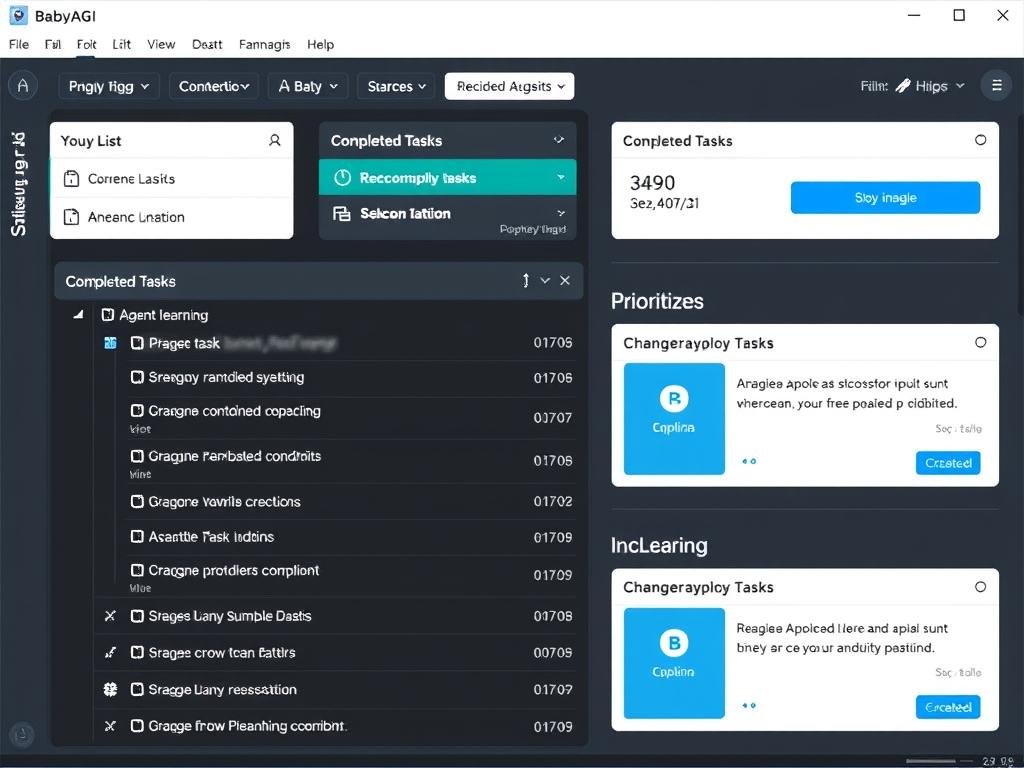
Core Principles of BabyAGI
- Task-driven architecture with dynamic prioritization
- Vector database integration for efficient information retrieval
- Continuous learning from task execution outcomes
- Modular design for easy customization and extension
- Lightweight implementation focused on specific use cases
- Open-source philosophy encouraging community contributions
Design Philosophy
BabyAGI embodies a minimalist approach to autonomous agents. Rather than attempting to solve every possible problem, it provides a streamlined framework focused specifically on task management. This philosophy makes BabyAGI particularly accessible to developers looking to understand and modify AI agent systems, as its codebase is intentionally compact and well-documented.

Applications of BabyAGI
BabyAGI’s focused approach makes it well-suited for specific scenarios:
Project Management
BabyAGI excels at breaking down complex projects into manageable tasks, prioritizing them based on dependencies and importance, and tracking progress toward completion.
Research Organization
For academic or business research, BabyAGI can manage the process of gathering information, organizing findings, and identifying knowledge gaps that require further investigation.
Personal Productivity
As a sophisticated to-do list manager, BabyAGI can help individuals organize their tasks, suggest optimal sequences, and ensure nothing falls through the cracks.
Learning Pathways
BabyAGI can structure educational content into logical sequences, creating personalized learning paths that adapt based on progress and comprehension.
Discover BabyAGI’s Task Management
Learn how BabyAGI’s task-driven approach can help organize complex projects and streamline your workflow.
Head-to-Head Comparison: AutoGPT vs BabyAGI
While both AutoGPT and BabyAGI represent significant advancements in autonomous AI agents, they differ substantially in their approaches, capabilities, and ideal use cases. This direct comparison examines key aspects of both frameworks to help you determine which might better suit your specific needs.
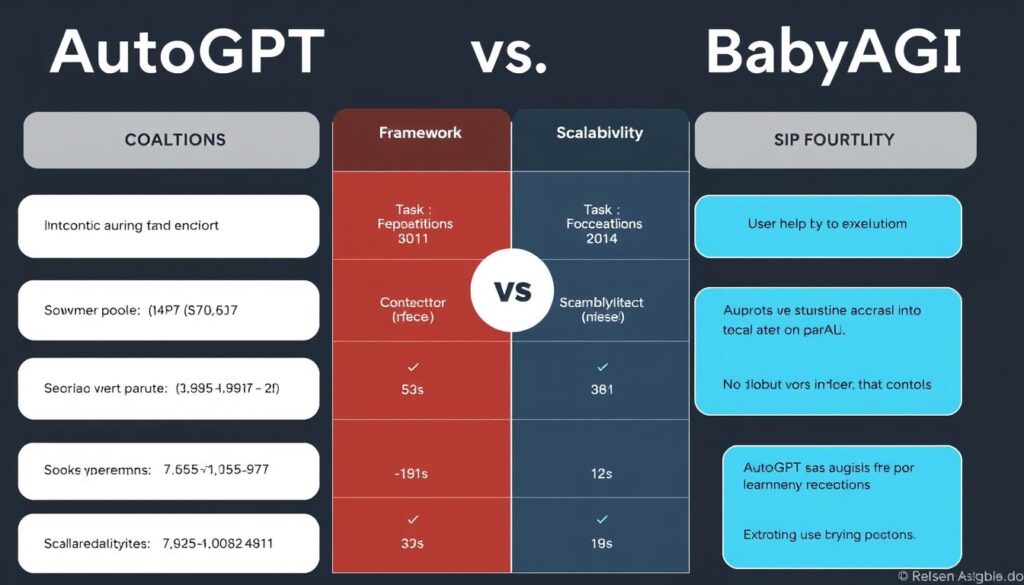
Task Execution Capabilities
| Capability | AutoGPT | BabyAGI |
| Task Complexity | Handles highly complex, multi-step tasks with extensive context | Excels at managing and prioritizing simpler, well-defined tasks |
| Tool Integration | Extensive plugin system for integrating with external tools and APIs | More limited integration capabilities, focused on vector databases |
| Autonomy Level | High autonomy with minimal human intervention needed | Moderate autonomy, often requires human review of task outputs |
| Context Handling | Maintains extensive context across multiple interactions | More focused on task-specific context rather than broad awareness |
Learning Mechanisms
AutoGPT Learning Approach
- Recursive self-improvement through continuous refinement
- Maintains memory of previous actions and outcomes
- Can adapt strategies based on success or failure
- Leverages internet access for up-to-date information
BabyAGI Learning Approach
- Task-driven learning focused on specific objectives
- Vector database for efficient information retrieval
- Prioritization algorithms that improve with use
- Simpler but potentially more stable learning pattern
Scalability & Limitations
AutoGPT Scalability
AutoGPT’s comprehensive approach comes with higher computational requirements. Its recursive nature can lead to token usage escalation, potentially increasing costs for complex tasks. The system may also encounter challenges with very long-running processes due to context limitations in underlying language models.
BabyAGI Scalability
BabyAGI’s more focused design typically results in lower resource consumption, making it more cost-effective for certain applications. However, this efficiency comes at the cost of breadth—BabyAGI may struggle with tasks that fall outside its core task management competencies.
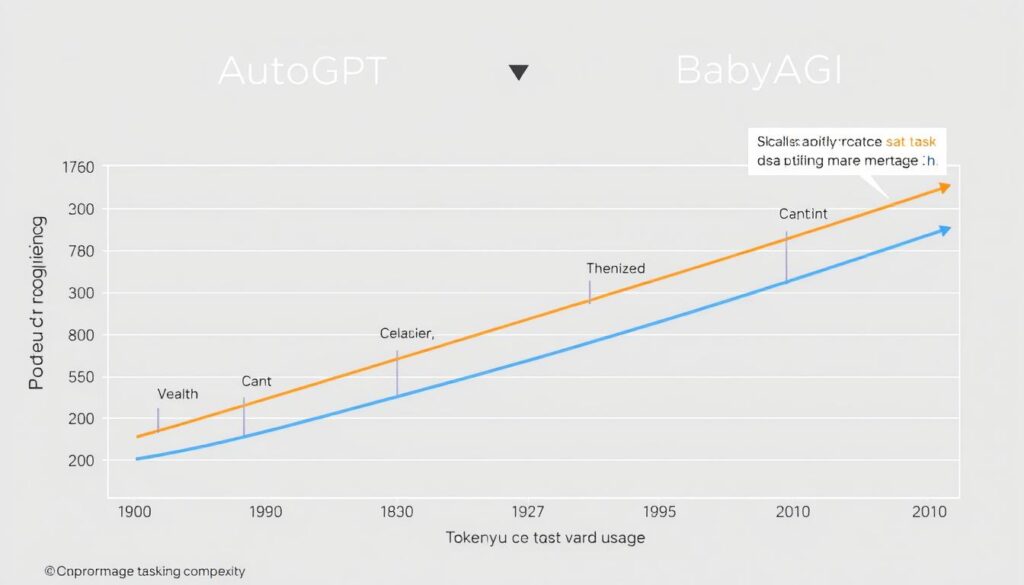
User Accessibility
| Aspect | AutoGPT | BabyAGI |
| Setup Complexity | Moderate to high, requires API keys and potentially GPU resources | Relatively simple, minimal dependencies and resource requirements |
| Documentation | Extensive but can be overwhelming for beginners | Concise and focused, easier for newcomers to understand |
| Customization | Highly customizable but requires deeper technical knowledge | More straightforward customization with a simpler codebase |
| Community Support | Large, active community with extensive resources | Smaller but growing community, focused on specific use cases |
Get Our AI Agent Implementation Guide
Receive our comprehensive guide on implementing autonomous AI agents in your organization, with detailed walkthroughs for both AutoGPT and BabyAGI.
Smartness Analysis: Defining Intelligence in AI Agents
When evaluating autonomous AI agents like AutoGPT and BabyAGI, it’s essential to establish meaningful criteria for “intelligence.” Unlike traditional software that follows predefined rules, these agents demonstrate emergent capabilities that more closely resemble human-like problem-solving. This section examines how we can measure and compare the intelligence of these systems.
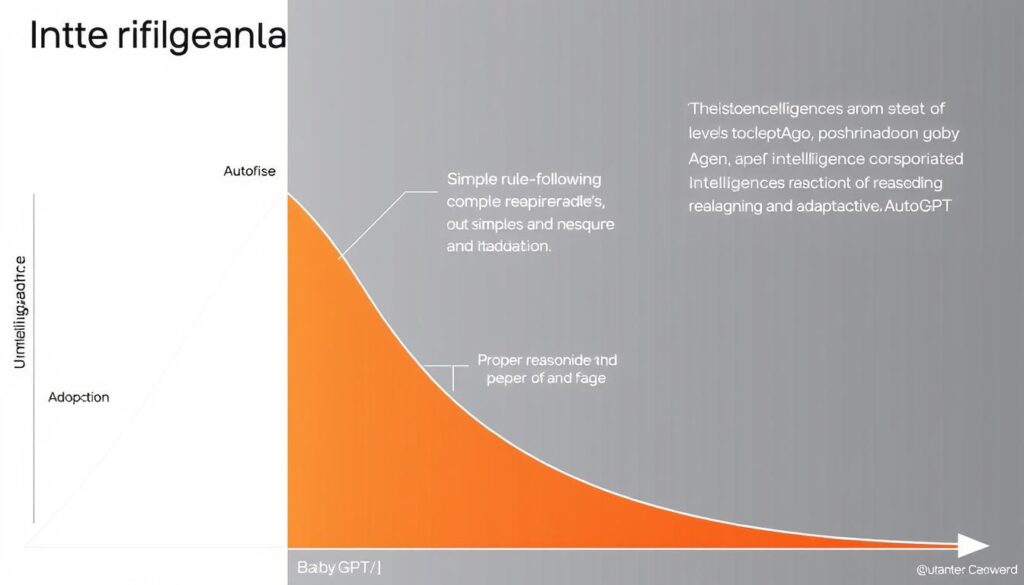
Defining Intelligence in AI Agents
For autonomous AI agents, intelligence can be measured across several dimensions:
- Problem Decomposition: The ability to break complex goals into manageable sub-tasks
- Adaptability: How well the agent adjusts its approach based on new information or changing circumstances
- Memory Utilization: Effective use of context and previous experiences to inform current actions
- Tool Proficiency: Skill in leveraging available tools and APIs to accomplish tasks
- Reasoning Transparency: The clarity and logic of the agent’s decision-making process
- Creativity: Generation of novel solutions to unexpected challenges
Benchmark Comparisons
Comparative Analysis
Based on our benchmark testing and analysis, AutoGPT generally demonstrates higher overall intelligence across most dimensions, particularly excelling in tool proficiency and problem decomposition. Its ability to leverage internet access and maintain extensive context gives it an edge in handling complex, open-ended tasks.
BabyAGI, while scoring slightly lower overall, shows particular strength in reasoning transparency and problem decomposition. Its focused approach to task management results in more predictable and explainable behavior, which can be advantageous in scenarios where reliability and understanding the agent’s decision-making process are paramount.
The intelligence of an AI agent should not be measured in absolute terms, but rather in how well it serves its intended purpose. AutoGPT’s broader capabilities make it more versatile, while BabyAGI’s specialized focus can make it more effective for specific task management scenarios.
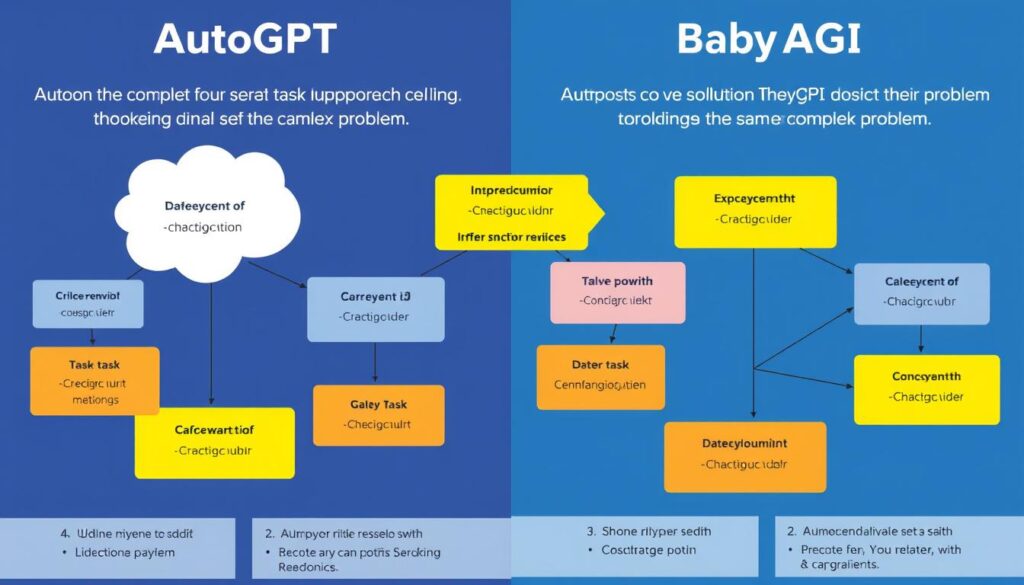
Real-World Applications: AutoGPT vs BabyAGI in Practice
The theoretical capabilities of AutoGPT and BabyAGI translate into distinct advantages for different real-world scenarios. This section explores practical applications of both frameworks, highlighting where each excels and the types of users who might benefit most from their respective approaches.
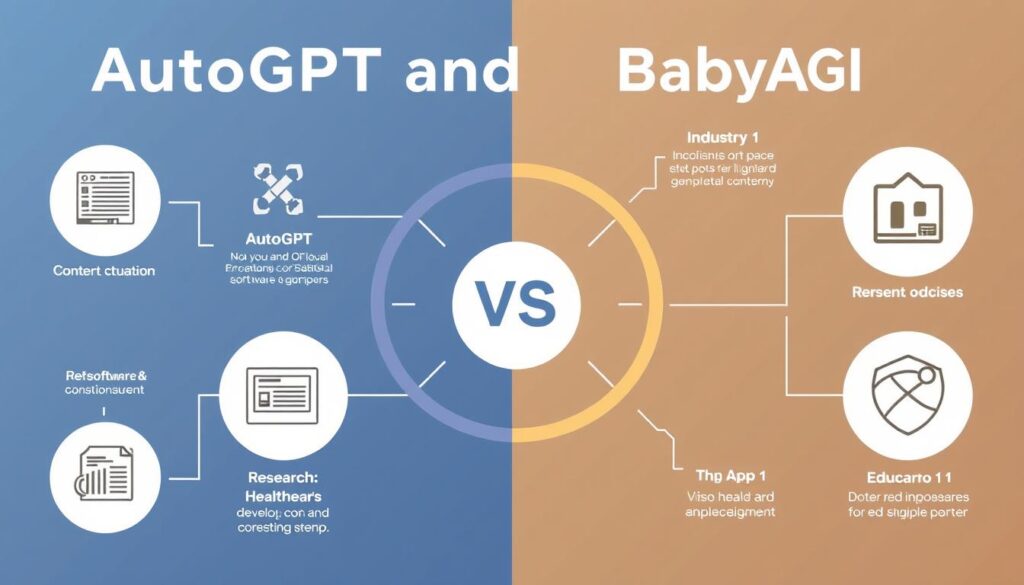
Business Automation Examples
Content Marketing with AutoGPT
A digital marketing agency implemented AutoGPT to streamline their content creation pipeline. The agent researches industry trends, generates blog posts, optimizes them for SEO, and even suggests social media promotion strategies—all with minimal human oversight.
The agency reported a 60% reduction in content production time while maintaining quality standards comparable to their human writers.
Project Management with BabyAGI
A software development firm integrated BabyAGI into their project management workflow to handle task prioritization and resource allocation. The system analyzes dependencies, team availability, and project deadlines to create optimized work schedules.
This implementation resulted in a 40% improvement in on-time deliveries and significantly reduced project manager overhead.
Customer Support Automation
An e-commerce company deployed both frameworks in different support roles: AutoGPT handles complex, multi-step customer issues requiring research and problem-solving, while BabyAGI manages the ticketing system, ensuring urgent matters receive prompt attention.
This hybrid approach reduced response times by 75% while increasing customer satisfaction scores.
Developer vs Non-Technical User Suitability
| User Type | AutoGPT Suitability | BabyAGI Suitability |
| Experienced Developers | Excellent – Full access to capabilities through code customization | Very Good – Simpler codebase makes modifications straightforward |
| Technical Professionals | Good – Can utilize through interfaces but may not leverage full potential | Very Good – Task-focused approach aligns well with business processes |
| Business Analysts | Fair – May require technical assistance for implementation | Good – More accessible for task management applications |
| Non-Technical Users | Limited – Generally requires technical setup and maintenance | Moderate – Simpler but still requires some technical knowledge |

Industry-Specific Applications
Healthcare
In healthcare settings, BabyAGI’s task management capabilities have proven valuable for clinical workflow optimization, ensuring critical patient care tasks are properly prioritized. Meanwhile, AutoGPT has found application in medical research, where its ability to analyze scientific literature and generate hypotheses assists researchers in identifying promising avenues for investigation.
Education
Educational institutions have implemented BabyAGI to create personalized learning pathways for students, adapting curriculum sequences based on individual progress. AutoGPT has been utilized to develop comprehensive educational content, generating explanations, examples, and assessments across various subjects and difficulty levels.
Finance
Financial analysts leverage AutoGPT for market research and report generation, where its ability to process vast amounts of information provides valuable insights. BabyAGI has found a niche in compliance management, ensuring regulatory tasks are properly sequenced and completed on schedule.
Legal
Law firms utilize AutoGPT for case research and document analysis, where it can review precedents and identify relevant statutes. BabyAGI helps manage complex case workflows, ensuring critical deadlines are met and resources are allocated efficiently across multiple matters.
Explore Industry-Specific AI Agent Solutions
Discover how autonomous AI agents can be tailored to your industry’s specific challenges and opportunities.
Conclusion: Which Agent Leads in 2024?
After thoroughly comparing AutoGPT and BabyAGI across multiple dimensions, it becomes clear that declaring an absolute winner would oversimplify the nuanced strengths and limitations of each framework. Instead, the “best” choice depends largely on your specific use case, technical resources, and organizational needs.
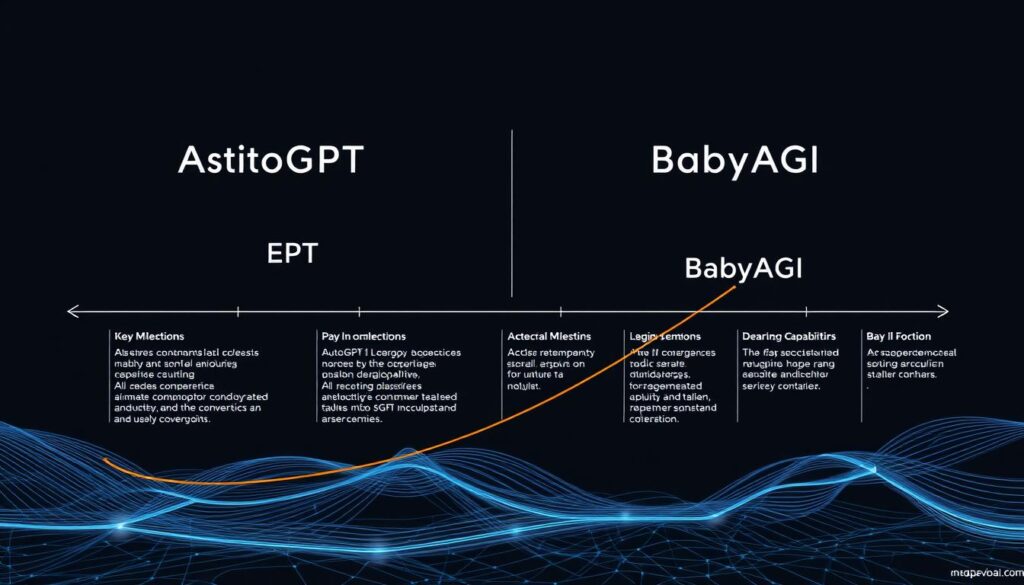
When to Choose AutoGPT
AutoGPT represents the better choice when:
- You need to handle complex, multi-step tasks requiring extensive reasoning
- Your applications benefit from internet access and real-time information
- You have the technical resources to manage a more sophisticated system
- Your use cases span multiple domains requiring versatility
- You value maximum autonomy with minimal human intervention
When to Choose BabyAGI
BabyAGI becomes the preferred option when:
- Your primary need is intelligent task management and prioritization
- You prefer a more lightweight, focused implementation
- Transparency and predictability in agent behavior are critical
- You want a simpler codebase that’s easier to understand and modify
- Your organization values incremental adoption of AI agent technology
Future Predictions for Autonomous AI
Looking ahead, we anticipate several key developments in the autonomous AI agent landscape:
- Convergence of Approaches: We expect to see frameworks that combine the comprehensive capabilities of AutoGPT with the focused efficiency of BabyAGI.
- Improved Reasoning: Future iterations will likely demonstrate more sophisticated reasoning capabilities, reducing hallucinations and logical errors.
- Enhanced Tool Integration: The ability to seamlessly work with a wider range of external tools and APIs will expand the practical applications of these agents.
- Specialized Variants: Industry-specific versions optimized for domains like healthcare, finance, and education will emerge with domain-specific knowledge and capabilities.
- Accessibility Improvements: User interfaces and setup processes will become more streamlined, making these powerful tools accessible to non-technical users.
Both AutoGPT and BabyAGI represent significant milestones in the evolution of autonomous AI agents. As these technologies continue to mature, organizations that begin experimenting with and implementing them now will gain valuable experience that positions them advantageously for the increasingly AI-augmented future of work.
The question isn’t whether to adopt autonomous AI agents, but rather which approach best aligns with your specific needs and how to integrate these powerful tools into your existing workflows for maximum benefit.
Stay Updated on AI Agent Developments
Subscribe to our newsletter for the latest insights, tutorials, and case studies on autonomous AI agents and their practical applications.
Frequently Asked Questions About AutoGPT vs BabyAGI
What are the main differences between AutoGPT and BabyAGI?
AutoGPT is a more comprehensive framework focused on handling complex, multi-step tasks with high autonomy and extensive tool integration. BabyAGI takes a more focused approach centered on task management, prioritization, and execution with a simpler, more lightweight implementation.
Do I need programming skills to use these AI agents?
Some technical knowledge is beneficial for both frameworks. AutoGPT typically requires more technical expertise for setup and customization, while BabyAGI has a simpler codebase that may be more accessible to those with basic programming skills. Various community-developed interfaces are making both more accessible to non-technical users.
What are the costs associated with running AutoGPT or BabyAGI?
Both frameworks are open-source and free to use, but they rely on language models like GPT-4 that incur API costs. AutoGPT typically consumes more tokens due to its recursive approach, potentially leading to higher costs for complex tasks. BabyAGI’s more focused design generally results in lower token usage.
Can these AI agents replace human workers?
Rather than replacement, these agents are best viewed as augmentation tools that handle routine or time-consuming tasks, allowing humans to focus on more creative, strategic, or nuanced work. They excel at certain tasks but lack the judgment, creativity, and contextual understanding that humans bring to complex situations.
Are there security concerns with using autonomous AI agents?
Yes, several security considerations exist. These include data privacy when agents process sensitive information, potential for unintended actions when given broad permissions, and the need for proper oversight mechanisms. Organizations should implement appropriate guardrails and monitoring when deploying these technologies.







